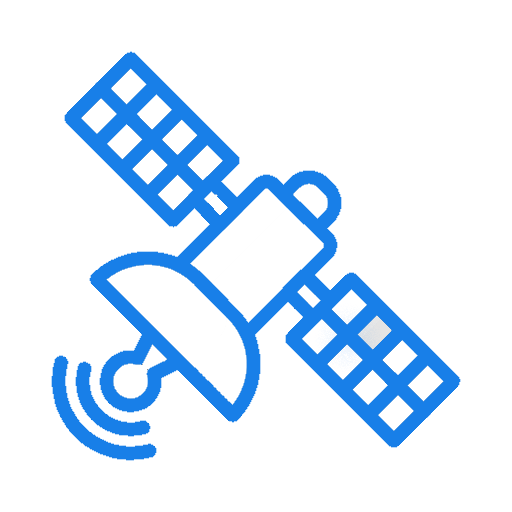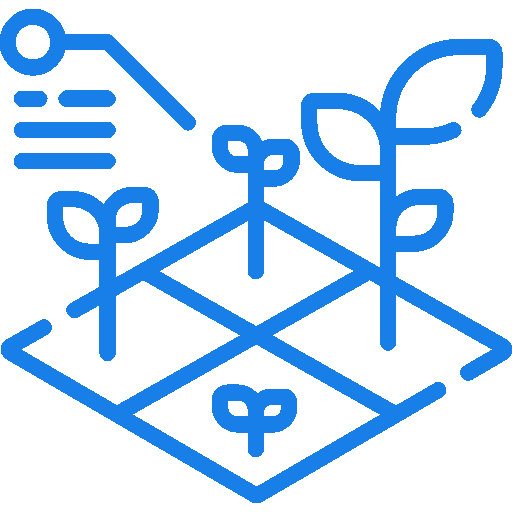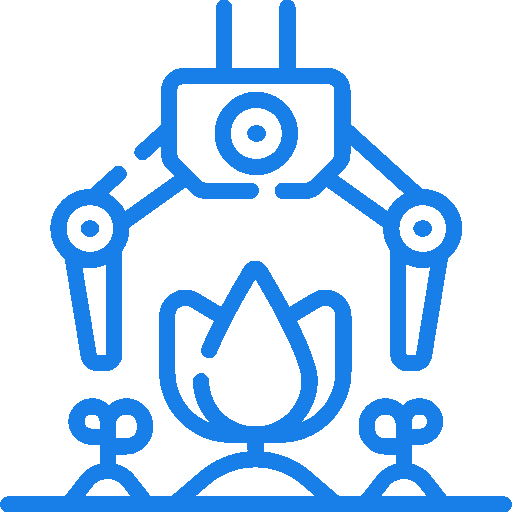Artificial Intelligence (AI) in Agriculture
As the global population continues to grow, natural resources get scarcer, and climate change becomes more and more evident, producing more with much less is a necessity. The role of the agricultural sector becomes even more pronounced as its effectiveness is crucial in supporting the global food supply. The use of AI in agriculture can provide the industry with the necessary boost, allowing it to cope with many challenges.
Artificial Intelligence in agriculture turns that dream into reality. With AI syncing all the farm equipment, analyzing data, making decisions, and applying optimal actions at all stages, the industry will advance to a completely new level.
AI TRANSFORMS AGRICULTURE INDUSTRY
How AI is used in agriculture – potential use cases
Satellite Field and Soil Inspection
Complexity: 2 (There are usually only a few possible field conditions. With their precise detection, the task is very effective).
Data needed: Labeled satellite photos of different field conditions. The performance largely depends on image quality. Good satellite coverage of the area is typical nowadays, but the quality and available date ranges are still worth checking. Various external satellite open data is often available.
Influence on business: Increases crop productivity by analyzing the field conditions. Can detect probable diseases and study the weather conditions. With this information, it is possible to determine optimal locations and timing for both planting and harvesting.
Benefits:
- Technologies mostly combine satellite imagery with other data like weather parameters (humidity, temperature, or wind speed). This offers a better understanding of field conditions.
- Allows better determination of which crop is the best for each field given its properties, reinforcing decision-making with data. For significant areas of land, such customizable planting is often a problem. AI can use the information on needed crops to create the optimal detailed planting map.
- Can allow for field replanning. Traditionally farmers use geometrical or seemingly nature-based field boundaries. AI can form more crop-oriented fields, which will correspond better to the soil.
- Satellite images can show which regions need more irrigation and which have plenty. This leads to less waste in irrigation resources.
- Analyzing the satellite images over time will help detect standing water in remote areas. Farmers can prevent significant crop loss in these areas.
Price: Depends on the cost of obtaining quality satellite images and weather data. Additional hardware is usually not required. Therefore, the prices are generally attractive.
Examples: Many companies and startups worldwide offer satellite field and soil inspection to understand the land better. Most of them usually combine this technology with other services, such as FarmShots. Other companies focus on year-to-year changes, providing a moving picture of how to adapt to changes.
Forestry Management
Complexity: 2 (All main tasks are based on tree detection and tree classification).
Data needed: Drone or satellite photos of forest or tree-planting areas. Some technologies use sensors in different forest locations.
Influence on business: These technologies help keep track of forest or tree plantation well-being and prevent possible disasters. Aerial images, in particular, are very effective in detecting deforestation.
Benefits:
- As with other cases, AI helps in covering large areas of land much more effectively. However, this time, portions of land are more challenging to get to. Even more so it can cover some places where checking from the ground is almost impossible.
- AI can check the development of young or recently planted areas of trees, detecting if they need additional irrigation or care. Ensuring that the young trees get all they require will determine how well and fast they will develop.
- A powerful use case is the detection of areas where forest fires are likely to start. For example, these can be some dried-out patches or areas with dangerous concentrations of peatlands.
- With AI, it is possible to classify each tree species quickly. Knowing what species grow in specific areas can be highly beneficial for the land caretakers, but AI can even produce a map with every tree.
- AI can also help determine which trees are best for timber harvesting with minimal environmental impact.
- With installed sensors or regular drone checks, it is possible to quickly identify illegal wood cutting and put a stop to it. There are known cases of using sound recognition to detect chainsaws from distances of kilometers.
Price: The price is usually moderate as the main effort would go into high-quality cameras and drones as the algorithms typically need to detect individual trees.
Examples: Both commercial and forestry organizations around the world already use AI. One of the most well-known cases in the aforementioned usage of AI is in Finland. Automatization of forest inspections helped decrease the fieldwork, increasing the effectiveness. Other cases also focus on tree care and accounting, tree crown, or yield estimation.
Plant Health Detection
Complexity: 3 (Depends on a health check method, but in general is the same as an average Computer Vision task. Effective plant recognition is crucial).
Data needed: Labeled photos of the plants, both in healthy and unhealthy conditions, with categories for different abnormalities (if required). Data usually comes from drones or on-field equipment with cameras.
Influence on business: AI allows to check on the widespread plant diseases in large volumes without using qualified specialists, lowering the cost.
Benefits:
- It is possible to cover large fields or a huge number of plants quickly. Humans cannot check a lot of plants individually or require much time to do so.
- Improvements in hardware for this task are not overwhelming. Unlike traditional methods, the only must-to-have tools are long-range drones and quality cameras. They are usually enough to cover the entire plantation.
- It can also be used for ripeness control and allows harvesting crops or fruits at the right time.
- Persistence: farmers can capture drone footage much more frequently. It allows them to make decisions on appropriate plant care immediately.
- Operators can preprogram the drone routes, making it possible to check crop conditions over time and point out the changes.
Price: Depends on the method of data gathering but is comparably low. If the farmers are not using widely popular drones, they can install cameras on tractors or other machines.
Examples: Several startups exist in this field, and each has a unique specialty. As of today, most of them use aerial footage, but some also use sensor data. They usually process the data right away and then inform their operator about current conditions. There are many guides to understand how the technology works and makes a decision.
Crop Sorting and Grading
Complexity: 4 (Highly dependent on the product because of different possible defects).
Data needed: Images of healthy and faulty products with defects highlighted by a skilled professional.
Influence on business: Removes one of the most time-consuming tasks after harvesting. It can simultaneously increase precision, as the automated AI will not tire of repetitive work. Manual detection complexity and efficiency are the biggest challenges of the field work.
Benefits:
- Reduces manual quality-check procedures after harvesting. This stage is one of the most stressful moments for many farmers.
- Technology is replicable on large scales, as fruits of the same sort tend to look similar.
- Saves costs for transporting and storing unhealthy products that cannot be sold.
Price: The price is connected with the automation of the entire process, so it increases with the automation scale. However, it replaces the labor-intensivemanual labor. Therefore, the price proves to be more than justifiable. Most times, it involves some sort of conveyor technology for constant evaluation.
Examples: A lot of implemented examples are known, primarily for different fruits or vegetables. Such systems have already been developed for sorting or classifying carrots, potatoes, cherries, even blueberries, and many other products.
Livestock Control and Management
Complexity: 5 (The complexity is in the diversity of the problem. It often works with animal behavior analysis and needs to understand how animals interact with the environment).
Data needed: Recordings of the previous animal behavior, usually in video or image format. For other applications like optimizing the feeding schedule, models use historical data.
Influence on business: Allows farmers to understand their animals better, even when they do not observe them. It also helps customize the care to cover every animal’s needs, which is almost impossible otherwise. Better conditions for every individual animal result in better output.
Benefits:
- With the ability to uniquely identify every animal, AI learns its behavioral patterns and can determine when they are not behaving in a typical manner. It allows farmers to identify diseases or possible non-optimal conditions quickly.
- Algorithms can also determine how much each selected animal needs to eat or which food results in better product quality. It also allows reducing the food waste or the number of unhealthy animals.
- In areas where animals are kept indoors, AI allows for fine-tuning the conditions just right. For example, setting the optimal weather conditions in the chicken industry can improve productivity. Similarly, the cows can practically decide for themselves when they needto be milked.
- In general, the goal of many AI livestock management projects is animal well-being and disease control. It helps keepers to build ethical farming businesses.
Price: Increases with the need to install sensors in the farm equipment. But in cases like behavior analysis, cameras and animal tagging may be enough. For some cases, such as AI for cow farms, sensors are required in many equipment parts.
Examples: Some animal farms already implemented AI in their operations and report impressive results. In several cases, the production results show up to a 30% increase. Other applications focus on livestock health, allowing to monitor it with a simple camera. Implementations for several kinds of animals already exist.
Automatic Harvesting Systems
Complexity: 5 (Is developing in line with robotics, so expertise in both fields is a must).
Data needed: Images of the product that needs to be harvested as well as a plant itself in both ripe and growing forms to distinguish which products to gather.
Influence on business: Addresses the labor shortages. It is one of the biggest challenges predicted to arise in the agricultural industry. In addition to removing the unpopular labor-consuming work, it can strengthen food supply chains.
Benefits:
- In many cases, such robotic systems are faster than human workers, substituting many of them.
- Systems work with constant accuracy, diminishing the damage to harvested products.
- They are not susceptible to biological or health threats, which are very sensitive to the food industry. This became a hot topic because of the COVID-19 pandemic. One of the challenges that arose is the possibility that some of the workers could get infected and stall some operations. An even bigger issue was that some workers could not harvest due to quarantine restrictions, leaving the industry critically understaffed.
- In the labor-requiring areas, robotic automation can increase harvest efficiency. A good example is apple harvesting. Since AI has many sensors, it can have a wider angle of view on the plant and spot some fruits that would otherwise go unnoticed.
Price: The high cost and complexity of such technologies were among the main challenges for its development. However, this changed with the rise of indoor farming and the pandemic.
Examples: Most of the developed examples so far are for indoor farming plants. Finding the ripe fruits ready for further operations is one of the usual automation steps. Popular plants to harvest with AI include tomatoes, pepper, strawberries, and other low-growing products. Some of the developments also exist for tree-growing fruits, with apples being the most popular one. The applications are expected to grow massively soon.
What clients and partners say about us

Olga Shevchenko
CEO, EVA

Jake Diner
Founder and CEO, Elafris Inc

Oleg Bilozor
CEO and Founder, Reply

Michael Korkin, Ph.D.
CTO at Entropix, Inc.
How Get Started With AI in Agriculture?
The use of AI in agriculture already yields some results. However, the full potential of Artificial Intelligence in farming is much greater. Companies employing new technologies can dramatically redefine their operations and get considerable competitive advantages. If you want your company to be one of them, now is the right time to start using new instruments.
Entrepreneurs, who want to benefit from AI in agriculture, should pay attention to the following three principles:
- Start with data. Employing artificial intelligence in agriculture begins with examining the quality, quantity, and type of available data. At this stage, you try to understand what can be achieved. Nonetheless, even if you don’t have enough data, don’t give up! It is still possible to follow through with data science in agriculture. Check public data sources and ask your business partners. Also, you can design a strategy to get some input for AI in farming yourself. For instance, you could convert some analog processes into digital.
- Don’t rush into complex solutions. Start with a small project, employing data science in agriculture and completing it faster. AI applications are scalable, and you can build on your first solution over time. The company will explore new capabilities, receiving an increasing amount of value.
- Failures are a part of the journey. Marrying AI and agriculture is a tricky task, requiring both time and resources. You should embrace failures as they contribute to organizational learning. Reaping the benefits of AI for agriculture demands persistence. Fail fast and early, and you’ll keep the investments of time and costs in check.
AI in Agriculture: Summary
Numerous applicable solutions in agricultural production became available thanks to innovations and technology. They’ve already boosted productivity and reduced the environmental footprint.
The critical role of data science for agriculture in modern production settings is already becoming evident, especially for large corporations. The keys to AI applications in agriculture include:
- Robots and Drones. Cost reduction and advancements in AI for farming allowed using robots for such complex tasks as fruit picking, nut harvesting, crop spraying, and weeding. Robots become easier to use, which also fosters their introduction in a wide range of farms.
- Cloud Computing. Powerful data centers are becoming more and more accessible. Therefore, an AI solution for farmers that requires collecting, storing, and analyzing huge amounts of data, does not demand costly infrastructure. The interconnection of different machines reinforces this shift.
- Sensors. An application of Artificial Intelligence in agriculture allows farmers to benefit from sophisticated sensing equipment. As such technologies evolve, hardware, installation, and maintenance costs also decrease. Sunlight, soil moisture levels, wind speed, and other factors can be routinely measured and analyzed.
FAQ
How is AI used in agriculture?
Artificial Intelligence arms the industry with new tools to reduce the amount of manual labor, enhance its productivity and decrease the environmental footprint.
What role will AI play in the agriculture industry?
AI is the future of the agricultural industry, providing the companies employing it with a significant competitive advantage.
What are the applications of artificial intelligence in agriculture?
AI assists farmers in planting, monitoring, and picking crops. It provides real-time insights from the fields, pinpointing areas that require irrigation, fertilization, and pesticide treatment.





